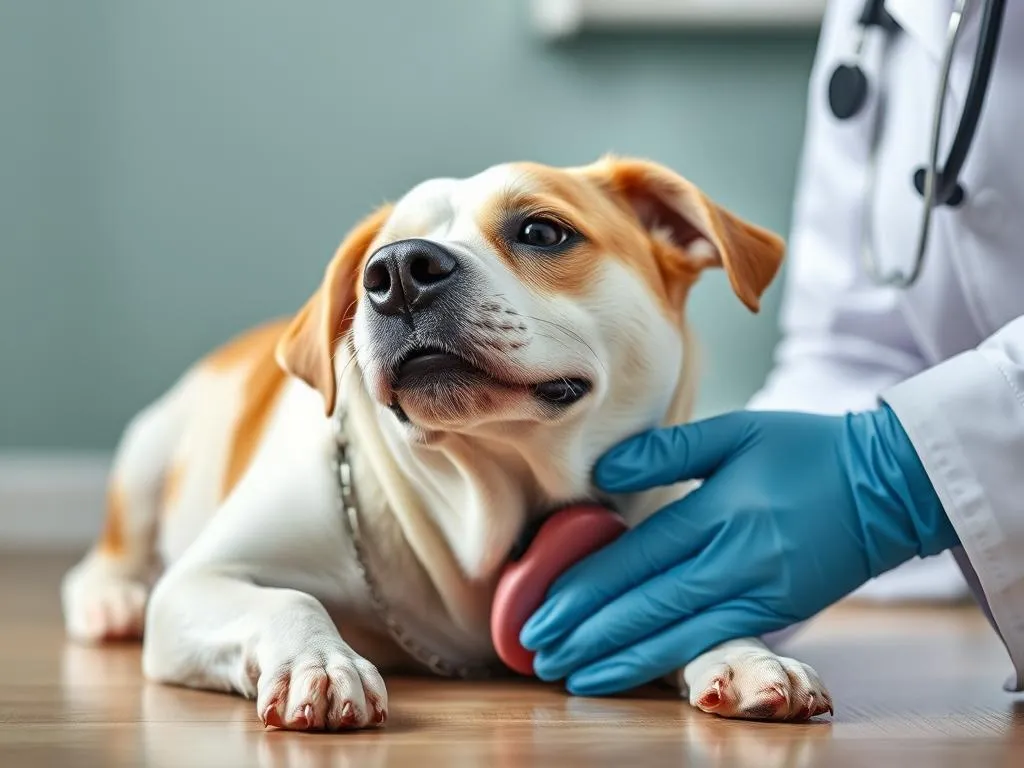
Introduction
Ensuring your dog’s health is one of the most important responsibilities of being a pet owner. It’s essential to recognize when something might be wrong, especially when it comes to symptoms like vomiting. Many dog owners often find themselves asking, when should I take my dog to the vet for vomiting? Recognizing the signs of distress in your dog can be crucial to ensuring their well-being. This article aims to educate dog owners on when to seek veterinary assistance for vomiting and related health issues.
Understanding Dog Vomiting
Definition of Vomiting in Dogs
Vomiting in dogs is a complex reflex that involves the expulsion of stomach contents through the mouth. It’s essential to differentiate vomiting from regurgitation. While vomiting is an active process, regurgitation is passive and often occurs shortly after eating. Understanding this distinction can help you better assess your dog’s condition.
Types of Vomiting
When it comes to dog vomiting, it can be classified as acute or chronic. Acute vomiting occurs suddenly and is often related to a specific cause, such as dietary indiscretion or infection. In contrast, chronic vomiting persists over a more extended period and may indicate underlying health issues.
The color and consistency of the vomit can also provide insights into your dog’s health. For instance, yellowish vomit may indicate bile presence, while vomit with a brownish tint could signal the presence of digested blood.
Common Causes of Vomiting
There are numerous reasons why dogs vomit, including:
- Dietary indiscretion: Dogs are known for their curious appetites and may ingest harmful substances, leading to vomiting.
- Infections: Viral, bacterial, or parasitic infections can irritate the gastrointestinal tract, causing vomiting.
- Chronic conditions: Diseases such as kidney or liver disease can manifest as vomiting.
- Toxic ingestion: Many common household items, including certain plants and human foods, can be toxic to dogs and result in vomiting.
- Stress or anxiety: Just like humans, dogs can experience stress or anxiety, which may lead to vomiting.
Recognizing Symptoms and Signs
Symptoms Accompanying Vomiting
When assessing your dog, it’s essential to look for symptoms accompanying vomiting. Pay attention to the frequency and timing of vomiting episodes. If your dog vomits multiple times in a short period, this could indicate a more serious issue.
Other signs to watch for include:
- Lethargy: A noticeable decrease in energy or enthusiasm.
- Diarrhea: Loose stools can accompany vomiting and may indicate gastrointestinal distress.
- Loss of appetite: A sudden disinterest in food can be a sign of illness.
- Dehydration: Look for dry gums and excessive thirst.
- Behavioral changes: If your dog starts hiding or whining more than usual, it could be a sign of discomfort.
Severity Assessment
It’s crucial to determine whether the vomiting is mild or severe. Mild vomiting may be an isolated incident, while severe vomiting may indicate a more serious health concern. Assess your dog’s overall health during vomiting episodes by observing their behavior and other symptoms.
When to Take Your Dog to the Vet
Immediate Veterinary Attention Needed
Certain signs indicate that you should seek immediate veterinary care. If your dog experiences:
- Persistent vomiting: More than 2-3 times in a short period.
- Presence of blood: Blood in vomit is a serious concern and requires urgent attention.
- Signs of dehydration: Dry gums, sunken eyes, and excessive thirst can indicate dehydration.
- Severe lethargy or unresponsiveness: A drastic change in activity level can signal a severe health issue.
Situations Requiring Urgent Care
Some situations necessitate urgent veterinary care, including:
- Vomiting accompanied by diarrhea: This combination can lead to rapid dehydration.
- Vomiting after ingestion of toxic substances: If you suspect your dog has ingested something harmful, seek immediate help.
- Vomiting in puppies or senior dogs: These age groups are more vulnerable to health complications, so err on the side of caution.
Non-Emergency Scenarios
Not all vomiting situations are emergencies. Occasional vomiting without other symptoms may not require immediate veterinary care. This could be due to dietary changes or minor gastrointestinal upset. However, always trust your instincts; if you’re concerned, consult your veterinarian.
Preparing for the Vet Visit
Information to Gather
Before heading to the vet, gather relevant information to help the veterinarian assess your dog’s condition. Consider noting:
- Vomiting frequency and duration: How often and when did the vomiting occur?
- Diet and recent changes: Have you introduced new food or treats?
- Other observed symptoms or behavioral changes: Any additional signs can help in diagnosis.
Questions to Ask Your Veterinarian
When you visit the vet, prepare a list of questions to ensure you understand your dog’s health. You might ask:
- What could be causing the vomiting?
- What diagnostic tests do you recommend?
- What treatment options are available, and what home care should I provide?
Home Care for Mild Cases of Vomiting
Monitoring Your Dog at Home
If your dog is experiencing mild vomiting, monitor them closely at home. Keep track of how often they vomit and assess their hydration levels.
Dietary Management
In cases of mild vomiting, dietary management can be beneficial. Here are some tips:
- Temporarily withhold food and water for a few hours to allow your dog’s stomach to settle.
- Gradually reintroduce a bland diet, such as boiled chicken and rice, after a period of fasting.
- Avoid certain foods during recovery, including rich or fatty foods, which can irritate the stomach.
When to Reassess
If your dog continues to vomit after a day or two, or if other symptoms develop, it’s time to seek veterinary advice. Monitoring is crucial, as persistent symptoms may indicate a need for further investigation.
Preventive Measures for Dog Vomiting
Diet Management
A well-balanced diet can help prevent vomiting. Ensure you choose high-quality dog food and avoid giving your dog table scraps or harmful foods. Familiarize yourself with foods that are toxic to dogs, such as grapes, chocolate, and onions.
Regular Vet Check-ups
Routine veterinary visits are essential for maintaining your dog’s health. Regular screenings can catch potential issues before they become serious. Ensure your pet is up-to-date on vaccinations and deworming schedules.
Environmental Safety
Creating a safe environment for your dog can help prevent accidents. Pet-proof your home by removing toxic plants and substances. Keep hazardous materials, such as cleaning products and medications, out of reach.
Conclusion
Being vigilant about your dog’s health care is crucial. When it comes to symptoms like vomiting, understanding when to seek veterinary assistance can make a significant difference in your dog’s well-being. Always trust your instincts as a pet owner; if you’re uncertain, consulting a veterinarian is the best course of action. Remember, when should I take my dog to the vet for vomiting? It’s better to err on the side of caution when it comes to your furry friend’s health.









